What are Spur Gears
Spur gears are cylindrical gears with teeth that are straight and parallel to the gear's axis of rotation. These gears are the most common type used in various industries for power transmission. They are known for their simplicity and efficiency in transferring motion and power between parallel shafts. Spur gears are widely used due to their ability to provide a constant velocity ratio and their ease of manufacture.
The fundamental principle behind spur gears is the meshing of teeth with those of another gear. As one gear rotates, its teeth push against the corresponding teeth of the other gear, causing it to turn. This interaction transfers motion and force from the drive gear (the one receiving initial power) to the driven gear (the one being turned). The design of spur gears ensures that they work best when the load is moderate and the speed of rotation is not excessively high. They are suitable for a wide range of applications including, but not limited to, clocks, washing machines, conveyors, and automotive transmissions.
The target audience for spur gears includes businesses in various sectors such as manufacturing plants, machinery repair shops, and construction companies. These gears are also vital components for OEM (Original Equipment Manufacturer) suppliers who integrate them into more complex machinery systems. Whether for mass production or custom applications, spur gears play an integral role in mechanical assemblies where precise rotary motion is required.
Types of Spur Gears
In the realm of mechanical components, spur gears can be found in an array of configurations to suit different operational needs and applications. Some common types include:
Standard Spur Gears: These are widely used in many applications due to their simple design which facilitates ease of manufacturing and maintenance. They are typically employed where noise is not a critical factor and high-speed operation is not required.
Rack and Pinion: This arrangement consists of a spur gear (the pinion) meshing with a straight-toothed component (the rack). It is commonly used to convert rotational motion into linear motion, such as in steering systems in automobiles or lifting mechanisms in industrial machinery.
Helical Gears: Although not purely a spur gear, helical variants can be mentioned due to their similarity. Helical gears have angled teeth which result in a smoother and quieter operation compared to traditional spur gears. They are often used when noise reduction is important.
Double Spur Gears: These consist of two gears attached together which can provide different ratios or drive multiple shafts. Their use is common in more complex machinery where multiple outputs are required from a single power source.
Each type has its unique use cases depending on the requirements such as noise constraints, torque transmission needs, and space limitations.
How to choose Spur Gears
Selecting the appropriate spur gear for your business involves considering various factors that influence performance, lifespan, and compatibility with your existing systems. The type of material is paramount; options like stainless steel or brass may be chosen for their durability and resistance to corrosion, while plastics like nylon may be selected for quieter operation or lighter weight. Customization capabilities on platforms like Alibaba.com allow for tailor-made solutions fitting specific operational parameters like tooth profile, size or even non-standard modifications.
Moreover, consider the application: industrial machinery may demand robustness while home-use equipment might prioritize compactness or noise reduction. The intended usage also dictates the necessary strength and wear resistance characteristics of the gear's material. Additionally, consult machinery test reports when available to ensure reliability and adherence to quality standards.
When perusing options on Alibaba.com, it's prudent to check availability of local service support which might be essential for maintenance or troubleshooting. Customized support such as ODM can align with unique business needs while ensuring compatibility with other core components like gearboxes or motors.
Best Spur Gears on Alibaba.com
Alibaba.com stands as a global wholesale marketplace that seamlessly connects businesses with a vast selection of spur gears from suppliers around the world. With an expansive inventory that caters to diverse industrial needs—be it manufacturing plants, repair shops, or construction works—Alibaba.com provides an unmatched variety of spur gears suitable for any application.
The platform's user-friendly interface and features enable buyers to easily locate spur gears matching specific requirements such as material composition, tooth profile, processing methods, or even color. Alibaba.com's commitment to facilitating trade across borders is exemplified through services like Trade Assurance, ensuring that transactions are secure and that goods meet buyers' expectations upon delivery.
For businesses seeking high-quality components that align with their operational demands, Alibaba.com offers an efficient solution backed by reliability and convenience. The platform's extensive network of suppliers ensures competitive pricing without compromising on quality—making it an ideal source for procuring spur gears whether in bulk quantities or singular precision items for specialized equipment.
Common FAQs for Spur Gears
What materials are commonly used for spur gears?
Spur gears can be manufactured from a variety of materials based on the application's requirements, including stainless steel, brass, aluminum, various plastics like nylon, and specialized gear materials such as carbon steel or alloy steels like 20crmnti.
How do I determine the correct size of spur gear for my application?
The size of a spur gear is typically determined by the load it needs to handle, the space constraints of the machinery, and the power transmission requirements. Consulting with an engineer or using gear design software can help in specifying the correct gear dimensions.
Can spur gears be used for high-speed applications?
While spur gears can be used in high-speed applications, they may generate significant noise and vibration. For high-speed requirements, it might be beneficial to consider helical gears or other types of gears designed to operate more quietly and smoothly.
What are the advantages of using custom spur gears over standard ones?
Custom spur gears are specifically designed to meet unique requirements of an application, which may include non-standard dimensions, special materials, unique tooth profiles, or specific tolerances that standard gears cannot provide.
How do I ensure compatibility between spur gears and existing machinery components?
To ensure compatibility, you must consider the module, number of teeth, pressure angle, pitch diameter, bore size, and any required keyways or set screws. It's important to match these specifications with those of the existing machinery.
What is the significance of tooth profile in spur gears?
The tooth profile affects the efficiency of power transmission, the level of noise produced during operation, and the amount of wear that occurs over time. Proper selection of tooth profile is critical for optimal gear performance.
Are there any maintenance tips for prolonging the life of spur gears?
Regular inspection for wear and tear, proper lubrication, maintaining correct alignment and tension in gear systems, and avoiding overloading are key practices for prolonging the life of spur gears.
Can spur gears operate in both directions?
Yes, spur gears can operate in both directions. However, the directionality can affect wear patterns over time, so it's important to design gear systems with this consideration in mind if reversing operations are common.
How do I choose between standard and nonstandard spur gears?
Standard spur gears are readily available and can meet most general requirements. Nonstandard gears are typically needed when specific design criteria must be met that are not addressed by standard sizes or when integration with unique equipment is required.
What does 'module' mean in terms of spur gears?
The module of a gear is a measure of the size of its teeth related to the pitch diameter. It's a key specification for ensuring that two meshing gears will fit together correctly and operate smoothly.
How important is material hardness for spur gear performance?
Material hardness is crucial for wear resistance and durability. Harder materials generally allow for a longer service life under higher loads but may require more precise manufacturing processes.
Can I use plastic spur gears for heavy-duty applications?
Plastic spur gears are not typically recommended for heavy-duty applications due to their lower strength and wear resistance compared to metal gears. They are better suited for lighter loads and lower speed operations.
What processing methods are used to manufacture spur gears?
Common processing methods include hobbing, machining (including CNC machining), forging, casting (including precision casting), injection molding for plastics, stamping, and other specialized techniques depending on material and requirement specifics.
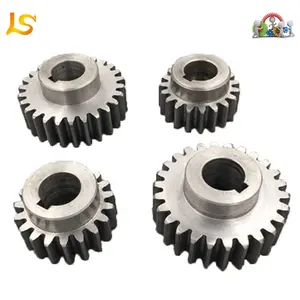


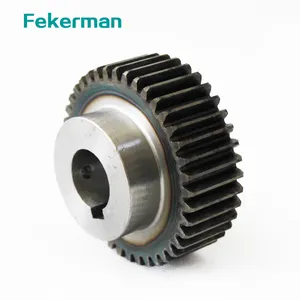







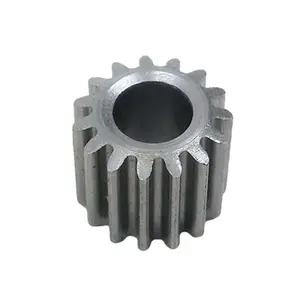

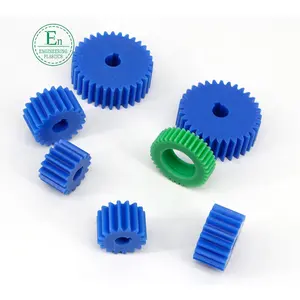

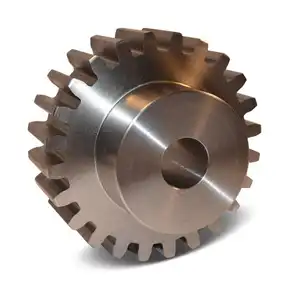
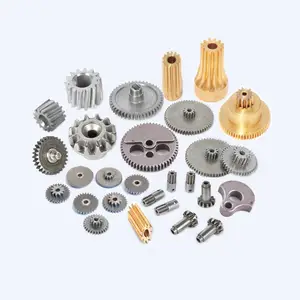


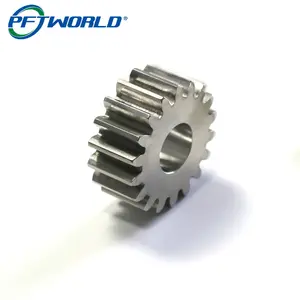

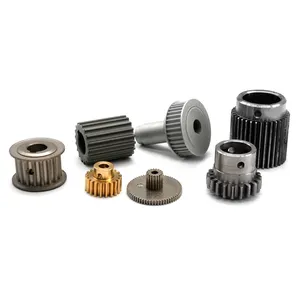




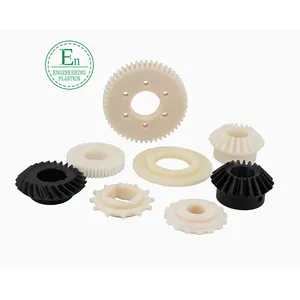

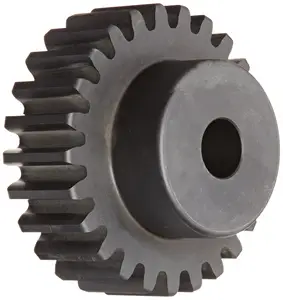

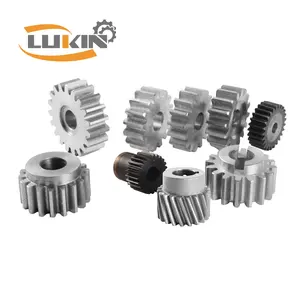
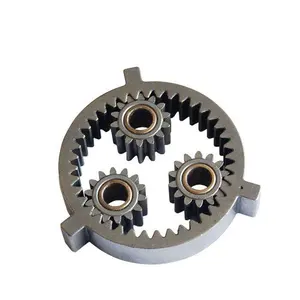




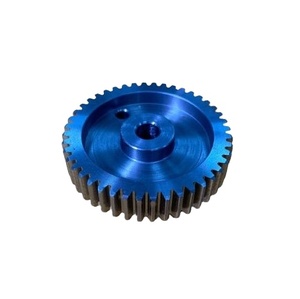




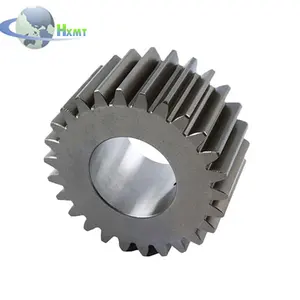



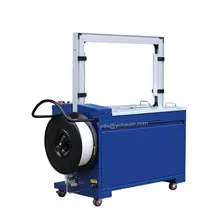




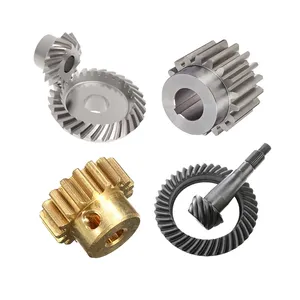

























 浙公网安备 33010002000092号
浙公网安备 33010002000092号 浙B2-20120091-4
浙B2-20120091-4